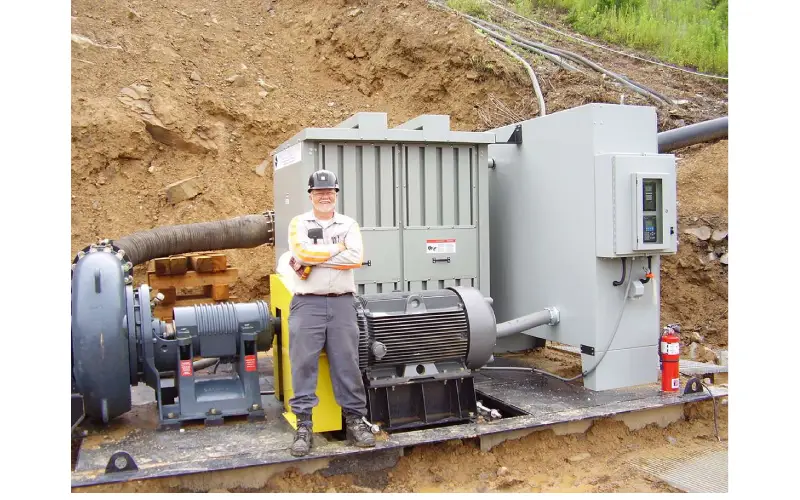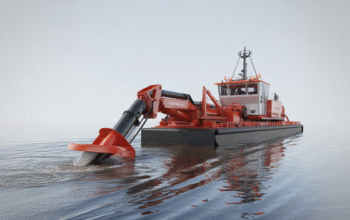Dredging is a critical operation for maintaining navigable waterways, constructing ports, and reclaiming land. One of the most significant advancements in dredging technology is the dredge booster pump, which can dramatically enhance the efficiency, range, and overall performance of dredging projects. This piece delves into how a dredge booster pump can revolutionize your dredging projects, providing a comprehensive understanding of its benefits across various operational aspects.
Enhanced Efficiency And Performance With A Dredge Booster Pump
The integration of a dredge booster pump into dredging projects offers a substantial boost in efficiency and performance. Dredging operations often face challenges such as transporting dredged materials over long distances, maintaining a consistent flow rate, and handling varying sediment types. A booster pump addresses these challenges by providing the necessary additional power to maintain the flow and pressure of the dredged material through the pipeline. This results in a more steady and reliable transfer process, reducing the likelihood of blockages and interruptions.
The enhanced efficiency provided by a dredge booster pump translates to faster project completion times. By maintaining a consistent flow, the pump ensures that dredged materials are transported smoothly and swiftly, minimizing delays. This efficiency is particularly crucial in projects with tight deadlines, where every hour of operation counts. Moreover, the consistent performance of the booster pump allows for more precise control over the dredging process, enabling operators to achieve the desired dredging depth and material removal rates with greater accuracy.

Increasing Dredging Range And Depth Using A Dredge Booster Pump
One of the standout features of a dredge booster pump is its ability to significantly extend the range and depth of dredging operations. Traditional dredging equipment has limitations in terms of how far and deep they can effectively operate. However, with the addition of a booster pump, these limitations can be overcome. The pump provides the extra hydraulic power needed to push dredged material over greater distances and from deeper depths, making it possible to tackle more extensive and complex dredging projects.
This increased range and depth capability opens up new possibilities for dredging operations. For instance, it allows for the maintenance of deeper navigation channels, which is essential for accommodating larger vessels in busy ports. Additionally, it facilitates the dredging of offshore sand deposits for beach nourishment projects, which are often located far from the shore. By enabling access to these previously unreachable areas, a dredge booster pump expands the scope and versatility of dredging operations.
Cost Effective Solutions For Large-Scale Projects With A Dredge Booster Pump
Large-scale dredging projects often come with significant financial investments. Implementing a dredge booster pump can offer a cost-effective solution by improving operational efficiency and reducing overall project costs. The pump’s ability to maintain a steady flow of dredged material minimizes the risk of costly delays and downtime, which can quickly escalate expenses. Moreover, the enhanced range and depth capabilities of the booster pump mean that fewer pieces of equipment and additional infrastructure are needed to achieve the desired results.
Another cost-saving aspect of using a dredge booster pump is the reduction in fuel consumption. By optimizing the hydraulic power required for material transport, the booster pump allows the dredge to operate more efficiently, consuming less fuel over the course of the project. This not only lowers operational costs but also contributes to a smaller environmental footprint, making the project more sustainable. Furthermore, the durability and reliability of modern dredge booster pumps reduce the need for frequent maintenance and repairs, leading to further cost savings.
Minimizing Downtime And Maintenance With Advanced Dredge Booster Pump Technology
Downtime and maintenance are significant concerns in dredging operations, as they can lead to delays and increased project costs. Advanced dredge booster pump technology plays a crucial role in minimizing these issues. Modern booster pumps are designed with robust materials and innovative features that enhance their durability and reliability. For example, many pumps are equipped with wear-resistant components and automated monitoring systems that detect and address potential issues before they escalate into major problems.
These technological advancements ensure that the booster pump can operate continuously for extended periods, reducing the frequency and duration of maintenance shutdowns. Additionally, the ability to monitor the pump’s performance in real-time allows operators to make informed decisions about when maintenance is truly necessary, rather than relying on scheduled maintenance that may not be timely. This proactive approach to maintenance not only minimizes downtime but also extends the lifespan of the equipment, providing long-term benefits for dredging projects.
Optimizing Dredge Operations In Challenging Environments With A Dredge Booster Pump
Dredging in challenging environments, such as those with strong currents, high sediment loads, or varying water depths, requires specialized equipment that can adapt to these conditions. A dredge booster pump is specifically designed to optimize dredging operations in such environments. The pump’s ability to maintain consistent flow and pressure, regardless of external conditions, ensures that dredging can proceed smoothly and efficiently.
In environments with high sediment loads, the booster pump helps to prevent blockages by ensuring that the dredged material is continuously and effectively transported through the pipeline. This is particularly important in areas where sediment composition can vary widely, as it reduces the risk of operational interruptions. Furthermore, the booster pump’s adaptability to different water depths allows for more precise dredging, even in areas with significant depth variations. This versatility is essential for projects that require dredging in diverse and dynamic environments.
Maximizing Pipeline Transport Capacity Through A Dredge Booster Pump
Pipeline transport capacity is a critical factor in the efficiency of dredging operations. The addition of a dredge booster pump can significantly increase this capacity by providing the necessary hydraulic power to push dredged materials over long distances. This capability is particularly important for large-scale projects where the material needs to be transported to distant disposal sites or reclamation areas.
By maximizing pipeline transport capacity, the booster pump reduces the need for multiple intermediate pumping stations, which can be costly and time-consuming to set up and maintain. This streamlined approach to material transport not only saves time and money but also enhances the overall efficiency of the dredging operation. Additionally, the increased transport capacity allows for more continuous dredging, reducing the time spent on repositioning equipment and restarting operations. This leads to a more seamless and productive dredging process, ultimately resulting in faster project completion.
Sustainable And Eco Friendly Dredging Practices Supported By A Dredge Booster Pump
Sustainability is becoming increasingly important in dredging operations, as environmental regulations and public awareness drive the need for eco-friendly practices. A dredge booster pump supports these efforts by enabling more efficient and controlled dredging, which minimizes the environmental impact. The pump’s ability to maintain a consistent flow and pressure reduces the likelihood of sediment resuspension and turbidity, which can harm aquatic ecosystems.
Moreover, the enhanced efficiency of the booster pump reduces fuel consumption and emissions, contributing to a lower carbon footprint for the dredging project. The pump’s durability and reduced maintenance requirements also mean that less waste is generated from worn-out components and repairs. These factors combine to make the use of a dredge booster pump a more sustainable choice for dredging operations, aligning with the growing emphasis on environmentally responsible practices.
Conclusion
The implementation of a dredge booster pump can revolutionize dredging projects by enhancing efficiency, extending operational range and depth, providing cost-effective solutions, minimizing downtime, optimizing operations in challenging environments, maximizing transport capacity, and supporting sustainable practices. As dredging projects become more complex and environmentally sensitive, the benefits of integrating a dredge booster pump into the operation are clear, offering both immediate and long-term advantages that can significantly improve project outcomes.




